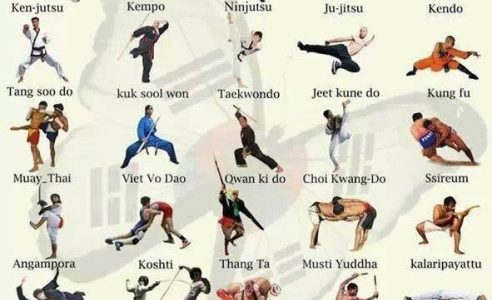The Journey And Change Of Martial Arts: Discovering Its Historical Structures And Contemporary Strategies
The Journey And Change Of Martial Arts: Discovering Its Historical Structures And Contemporary Strategies
Blog Article
Created By-Clemons Clements
Enter the globe of martial arts, where old beginnings and modern-day methods clash in an exhilarating trip of self-control and self-discovery.
As you explore the history and development of this fascinating art form, prepare to be astounded by the cultural influences, technical improvements, and profound approach that have shaped it over centuries.
From the battlefields of ancient civilizations to the training grounds of today, martial arts have stood the test of time, constantly adjusting and expanding.
Each strike, each activity, lugs with it the weight of many years of tradition and knowledge, passed down through generations. This is a story of resilience, of warriors who looked for not just physical prowess, however also self-confidence and harmony.
Join us on this impressive exploration as we uncover the keys, the legends, and the transformational power of martial arts.
Get criminal court federal lawyers to be inspired, challenged, and for life altered by the background and advancement of martial arts.
Cultural Impacts on Martial Arts
As you check out the history and evolution of martial arts, you'll quickly find the interesting ways in which cultural impacts have formed these fight methods.
From the ancient worlds of China and India to the much more current developments in Japan and Brazil, martial arts have been greatly influenced by the societies in which they stemmed.
For example, Chinese martial arts, such as Martial Art and Tai Chi, are deeply rooted in the viewpoint of Taoism and the concept of Yin and Yang.
On the other hand, Japanese martial arts, like Karate and Judo, show the samurai warrior practices and the worths of self-control and honor.
Similarly, Brazilian fighting style, Capoeira, combines components of African dance and music, reflecting the social heritage of African servants in Brazil.
These cultural influences not just provide each fighting style its distinct characteristics yet likewise give a much deeper understanding of the historic and social contexts in which they progressed.
Technological Developments and Martial Arts
With the surge of innovative weapons and ingenious training tools, you have actually had the ability to enhance your skills and adapt to the ever-changing fight landscape.
Technical advancements have transformed the means martial arts are practiced and shown. Virtual reality simulations now allow you to learn realistic battle circumstances without the risk of physical damage. High-speed video cameras catch every step, allowing you to examine and ideal your strategies. Wearable gadgets check your heart price, breathing, and muscle mass activation, giving instantaneous comments on your efficiency.
In addition, the advancement of specific devices, such as resistance bands and agility ladders, has enabled you to improve your speed, toughness, and dexterity. These technological advancements have not only made training more reliable yet have also pushed the borders of what is feasible in martial arts, permitting you to reach new elevations in your practice.
The Philosophy and Concepts of Martial Arts
The ideology and principles of martial arts are deeply rooted fit your frame of mind and instilling technique, focus, and regard in your practice.
1. Way of thinking: Martial Arts teaches you to establish a solid and resistant frame of mind. It enables you to overcome difficulties both on and off the floor covering, pushing your restrictions and persevering despite adversity.
2. Discipline: Martial Arts needs self-control and self-control. Via routine training and adherence to stringent regulations and methods, you learn to regulate your impulses and establish a strong work values.
3. Emphasis: Martial Arts calls for intense emphasis and focus. By educating your mind to be present in the moment, you improve your capacity to react rapidly and efficiently throughout combat situations.
4. Respect: Martial Arts emphasizes respect for oneself, instructors, training companions, and challengers. https://reidckquz.bloggerbags.com/35426615/exposing-the-essential-elements-that-add-to-a-successful-protection-acknowledge-the-value-of-working-with-an-experienced-criminal-defense-lawyer-as-your-optimal-technique-for-navigating-legal-obstacles instructs you to value the skills and experiences of others, promoting a feeling of sociability and gamesmanship.
Conclusion
Congratulations on finishing your journey with the fascinating world of martial arts! Throughout Read More In this article , you have experienced the rich history and amazing advancement of these combat practices.
From their old origins to the contemporary techniques we see today, martial arts have been shaped by social impacts.
The assimilation of innovation has actually additionally played a significant role in revolutionizing the method martial arts are shown and exercised in the here and now day.
However, it is very important to remember that martial arts are more than simply physical combat. They incorporate profound ideologies and guiding concepts that go beyond the mere act of combating.
Take a moment to review this obsolete adventure and appreciate how the heritage of martial arts remains to grow in the here and now, transcending time and boundaries.
